#orocovis
Explore tagged Tumblr posts
Text
HOMBRE RESULTA HERIDO CON CUCHILLO DURANTE PELEA EN NEGOCIO DE OROCOVIS
Un hombre identificado como Sebastián Sánchez Rodríguez, de 27 años, resultó herido con un arma blanca en medio de una pelea ocurrida alrededor de las 10:00 de la noche del sábado en los predios del negocio Trabcia Cycle Bar, ubicado en la calle Ernesto Ramos Antonini, en Orocovis. Según la información preliminar, Sánchez Rodríguez se encontraba jugando billar cuando se originó una discusión…
#agresión con arma blanca#apuñalamiento en negocio#bar en Orocovis#herido con cuchillo#incidente en Trabcia Cycle Bar#noticias de violencia#Orocovis#pelea en bar#policía puerto rico#Sebastián Sánchez Rodríguez
0 notes
Video
youtube
Taming the Beast at Toro Verde
We traveled deep into the lush mountains of Puerto Rico to Toro Verde to take on the Monster, the longest zipline in America!
Come fly through the air with us on seven exciting ziplines, then get vertical and fly headfirst up to 95 miles an hour on the Monster (8,300 feet) and the Beast (4,745 feet)! Leave your fear of flying behind and join the birds at 1,000 feet above the ground.
Toro Verde also offers other activities, including bicycling on a zipline and several climbing walls, and several restaurants with awesome views of the mountains and the screaming zipliners. Advance tickets are required.
INFO
Toro Verde Map
1 note
·
View note
Text

🇵🇷 What a day! I got to go zip lining for the first time! ⛰️
#zip lining#Toro Verde Adventure Park#Orocovis Puerto Rico#mountains#Monday afternoon#sightseeing#i believe i can fly#I believe I can touch the sky#Christmas vacation
2 notes
·
View notes
Text

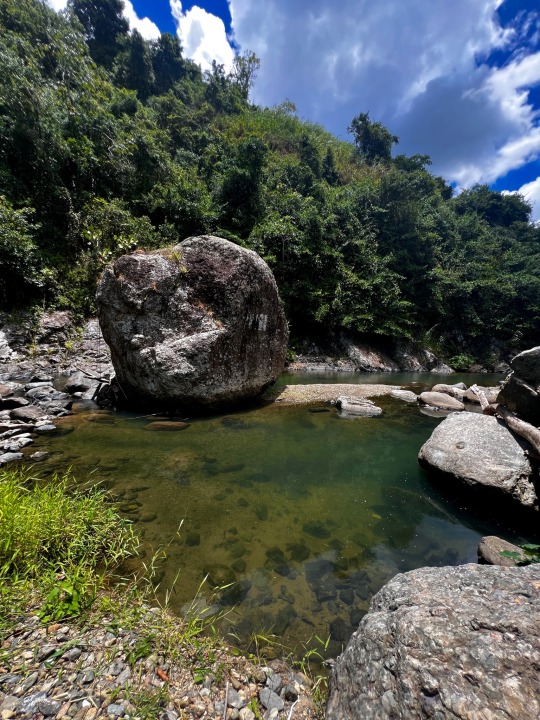

La Caldera, Orocovis
30/julio/2024
34 notes
·
View notes
Text
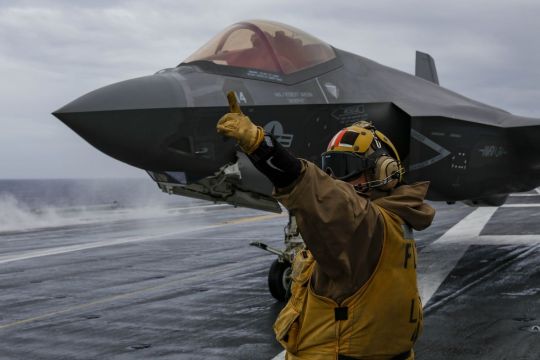
flickr.com
Black Knight
PACIFIC OCEAN (Jan. 8, 2022) Senior Chief Aviation Boatswain's Mate (Handling) Wilmarie Torres, from Orocovis, Puerto Rico, directs an F-35C Lightning II assigned to the "Black Knights" of Marine Fighter Attack Squadron (VMFA) 314 on the flight deck of the aircraft carrier USS Abraham Lincoln (CVN 72). The Abraham Lincoln Carrier Strike Group, led by Carrier Strike Group 3, deployed from San Diego on Jan. 3 in support of global maritime security operations. An integral part of U.S. Pacific Fleet, U.S. 3rd Fleet operates naval forces in the Indo-Pacific and provides the realistic, relevant training necessary to flawlessly execute our Navy’s role across the full spectrum of military operations — from combat operations to humanitarian assistance and disaster relief. U.S. 3rd Fleet works together with our allies and partners to advance freedom of navigation, the rule of law, and other principles that underpin security for the Indo-Pacific region. (U.S. Navy photo by Mass Communication Specialist 3rd Class Michael Singley)
17 notes
·
View notes
Text
Daka Taíno y estoy aquí.
I was the blogger Triguenaista/Inaruri who was stalked and harrassed for 10+ years, while homeless, by Keyla Rivera and her anti-indigenous group “This-is-not-taino". Keyla Rivera, of Florida and Orocovis, PR, a white Puerto Rican, was mostly responsible for this racist behavior.
Since in the last ten years, I have CONTINUED to see my name thrown around as a "validated pretendian/fraud" because of the now-exposed Keyla's behavior- We're just going to need to address it. And since I was doxxed by them, and my full name has been shared with you all, I'm going to go ahead and show you some documents that that hate-group wasn't willing to show.
Let's start with a family tree- ya?
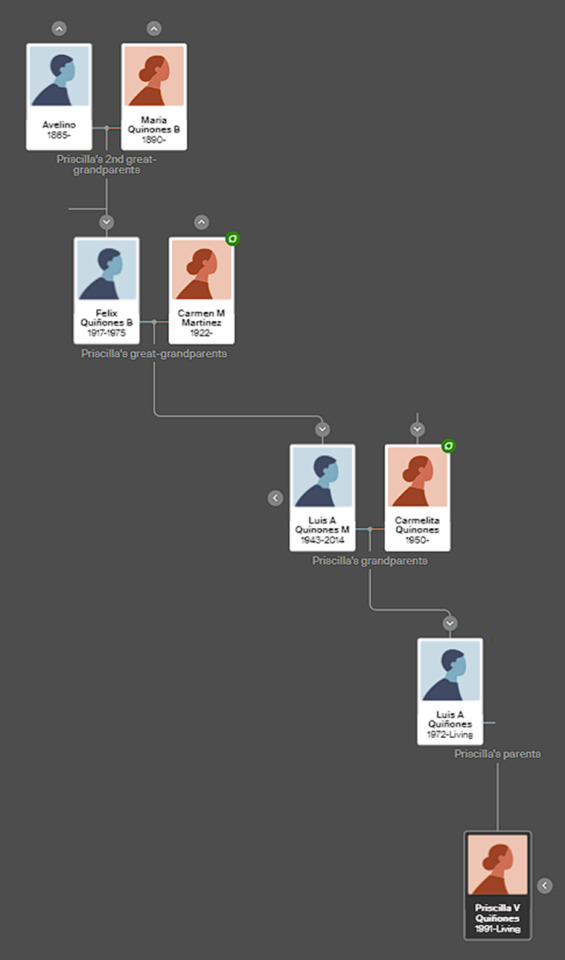

Avelino, was born into slavery in Puerto Rico, approximately 1865, in Arecibo Puerto Rico. To the best of my knowledge (and factoring in the DNA test), he was Afro-Taíno, with strong Nigerian/Western Bantu roots. As noted on the last published Registro Central de Esclavos of 1872 (page 3, 9th person recorded), he was a natural-born Puerto Rican (Natural de Oto Rico).
After abolition in 1873, like many others, Avelino was forced to continue working for 3 to 5 more years. Do Barbara Balseiro (the indicated slave owner) had a working relationship with Felix Marengo y Poggi, and was known to send slaves to work at his plantations.
Through research (1910 census), I found that Maria Baerga y Rivera De Quiñones was a "Mulatto" housekeeper for the Felix Marengo y Poggi in the 1910’s. It is likely that this is where Avelino met her daughter Maria Quiñones Baerga and developed a relationship.

They had son Felix (recorded as negro on census documents, until adulthood/WW2, where he is then recorded as blanco/brown toned (on his Draft card), who married Carmen Martinez.
This is Carmen’s Acta de Nacimiento which indicates race as “Mestiza”, clearly indicating not only direct Taíno heritage/ancestry, but a connection to an existing community as that was the only circumstance in which this term was legally used in PR when they started to write Taínos out of the country. It was and is currently illegal to list someone's race/ethnicity in PR as indigenous. Mestiza and Trigeño is the ONLY exceptions for those with concrete connections.
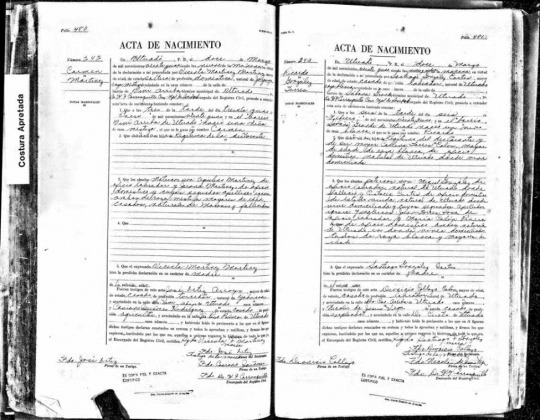
A Close-up:

On the naciemnto form above her mother is cited as “Vincenta/Vincenda”, from/born in Jayuya. There is a note about her grandparents in part 3. “Ambos de raza mestiza”, Ajiubro Martinez and Juana Martinez from Morovis.
According to family oral history, Carmen Martinez came from a community/family that took care of the Caguana Indigenous Ceremonial site of Utuado before the Instituto de Cultura Puertorriqueña took over with formal protections in 1955.
There may be a relationship between her and one of the 60 Puerto Rican indigenous children taken to the Carlisle Indian School in 1901. Three Martinez children were enrolled there, Provindentia, Levia, and Miguel. My best-informed guess is Provindentia Martinez may be my 2nd great-grandmother as “Vincenta” could be a derivative of the name. If it was Provendentia, she would have been the right age to have a child, settling down in PR after traveling to NY for a few years after her time at the Carlisle School, as recorded in their records. Until better clarification can be obtained, this is just speculation.
Carmen would make and maintain small bohio-like structures in the backyard of the family Utuado home (many were destroyed after Hurricane George, and the rest after Hurricane Maria), to house Semisakis and Opias.
My grandfather, Luis Alfonso Quiñones Sr. was extremely proud and vocal of our rich Taíno heritage and culture. He made sure that we knew our roots and how precious our indigenous ancestry is, and taught us all he could remember.
In terms of direct lineage, my direct Taíno lineage can be traced from my 2nd great-grandfather Avelino, my great-grandmother Carmen Martinez (whom I had the honor of knowing and having a relationship with as a child living in Puerto Rico), and my own grandfather Luis Alfonso Quiñones Sr (who I grew up with).
If "cultural connection"/"growing up in a continuously connected family" was your issue with my indigenous status- clearly I did and have the documentation to show my family's continuous connection.
If it's blood quantum/documented indigenous status- I'm between 3/8th and 7/16th according to my DNA. With the documents I have here, if Tainos were a federally recognized tribe in the US, by the BIA standards, I'd be eligible for enrollment.
And this is all without discussing how history and the laws affect lineage recording or the "Whitening of PR". My family's oral history should have been believed to start with, but now the documentation can be found online. You have your "proof" on the two points yall bring up the most.
So you see why the younger me couldn't figure out why everyone just believed the lies being told? How even now that this hate group was exposed, I don't get why I am the scapegoat for people trying to make a point. Like, I wasn't and am not an educator, nor was I trying to make money in any way (and I was homeless- I needed money and yet DID NOT ASK). I was literally just existing on this hell site and became a target. But yall handed over your cash really quick to this hate group, validated them, and were so shocked when they ended up being frauds and provided yall with NOTHING.
You all believed a white puertorrican that BIPOC's could not be trusted to be indigenous (look at the list, it is EXCLUSIVELY Black and Brown peoples and anyone who stood up for them. It wasn't a "frauds list" until after we all left the platform. That was added AFTERWARDS. And yes, some of us are STILL friends because we were here for the community, not cash or fame). You continue to keep that belief every time you defend it. In the end, ya'll are just being racist and need to stop hurting an already small af community.
Taínos exists. We are here. We are NOT recognized by the US gov't yet. To imply our self-determination takes away from indigenous people is to fundamentally not understand what it is to be indigenous. And, it implies you see the indigenous status as money and not actually living people with complex needs and issues.
I'm glad the rest of the internet has unlearned what this group put into the world about Taínos, but now I'mma need yall on here to minimally stop throwing my name around. Stop it. I am exactly who I have been telling you all I am, whether you accept that or not is NOT my problem. I have the documentation, which is more than can be said about anyone yall have believed in the past.
At least I know who my people are, grew up knowing, and can live happily knowing there are people who disagree in our community because we aren't a monolithic group. Yall just need to treat us as humans.
For those reading for the history of it all- I'm glad to help. If you're trying to figure out your family's documentation- I got great info on how to find the information and who to contact. If you're looking for cultural resources- tainolibrary is LITERALLY the best source and it's free (Note: I have no affiliation with them. I genuinely believe they are a healthy and safe resource for those seeking reconnection/validation).
For those realizing they fucked up in believing my stalker- I accept my apologies in cash.
#inaruri#triguenaista#taino#tainos#caribbean indigenous#tumblr hate groups#this-is-not-taino#Since my name keeps coming up Im going to HAVE to serve some truths#the poll spoke and I posted#Taino ancestry#Indigenous recognition#indigenous#I am so sorry to have gone off like this but I have HAD it#puerto rico history#caribe indigena
13 notes
·
View notes
Text
El Chupacabra Retires to South Florida
This bizarre creature is an import to Florida in the past decade. The chupacabra actually made its debut on the world's weird list in 1975, after a series of farm-animal killings in Puerto Rico. Rural villages came forth with claims that an unidentified creature was killing their animals in the early-morning hours by biting their necks. It left strange puncturelike wounds on its victims that were inconsistent with any known species. People reported hearing screeching noises and flapping sounds as if made by the wings of a large bird. Eyewitnesses who claimed they had actually seen the creature generally, described it as about three or four feet tall, gray in color, with an oversized head, big oval eyes, and a mouth full of teeth. Another characteristic common in chupacabra reports is the sulfuric smell emitted by the creature. Some descriptions offered by witnesses implied the beast was a gargoyle-like being or a Tasmanian devil with webbed feet.
The rash of unexplained killings was first centered around Orocovis, in the mountain interior of Puerto Rico, where the mutilated remains of sheep, cows, goats, dogs, chickens, and other animals were found almost daily over a period of two months. According to one account, two hundred cows were killed by the mysterious entity. In accounts of goat killings, many people claimed the creature had literally "sucked the insides out of its victims through the eye sockets," leaving only carcasses of skin and bones. Since the bizarre beast lacked a name, locals dubbed it "the goat sucker," or, as translated in Spanish, el chupacabra.
Several prominent and credible citizens of Canóvanas came forward with sightings of an entity that "stood five feet high, with powerful hind legs like a kangaroo, big slanted eyes, and a ridge of fins or spines running down its back." One man claimed to have chased the creature, catching it briefly, long enough to look in its mouth and see long fangs before it broke free and disappeared. Chupacabra reports became so frequent that authorities could no longer ignore them. Police organized search parties to look for whatever was killing so many animals. Canóvanas's mayor, for lack of any other explanation, eventually blamed the animal deaths on feral dogs, though rumors began circulating that chupacabras were some kind of mutation resulting from a secret government experiencing. By 1996, chupacabra tales had spread throughout Latin America and among Florida's large Hispanic population.
The first suggested chupacabra report found by Weird Florida appeared in Sweetwater. (There are four Sweetwaters in the state. This one is a community of mostly Hispanics, located on Route 41 west of downtown Miami.) The report was made on March 10, when a woman said that an "inhuman thing" had crossed her property. This was followed by two more reports, about a strange animal killing two goats and twenty-seven chickens. That was enough to start the ball rolling.
On July 23, 1996, the evening news on most Florida television stations carried a story about a strange beast that was killing people's pets in South Florida and leaving behind a sulfuric smell. Although the C-word was never mentioned, rumors began circulating in Hispanic neighborhoods that this was indeed the work of a chupacabra.
In Tampa, two men reported that a chupacabra had killed some chickens, and claimed to have seen the creature on two different nights. We are left with three possible explanations for the appearance of these strange bloodthirsty creatures in Florida: The first is that they were imported from the Caribbean, perhaps on a cargo ship; the second is that it is mere folklore; and the third is that the infamous Jersey Devil has retired to South Florida. But before making any judgements, read what others have said about Florida's chupacabra.
Definitely a Chupacabra
I would side with the belief the animal mutilations in the Miami area were definitely caused by a chupacabra. When one is finally captured, I don't think it will be all that astonishing and will just be viewed as a new species. They have been seeing these animals for many years in the island and I think one somehow came on a ship and got loose. If you check, you will see that all the sightings have been near the Everglades, which is like the climate in the islands, and these animals would have no problem surviving. I looked at the map, and it appeared to be that all the sightings were right on the edge of the glades. -c7869
Chicken Takeout for Chupacabra
My grandparents live in Sweetwater. My grandfather had a coop that he kept chickens in. One night he heard noise around the coop, and the chickens were going crazy. He got up and went to loco with a flashlight. The coop is a large square frame covered with chicken wire and is partly covered on top with a flat roof. When my grandfather shined his flashlight, he saw something sitting on the roof that looked like a small kangaroo with big eyes that reflected red in the light. Whatever it was jumped off the coop and hopped away real fast. My grandfather said it really went fast, as fast as a dog can run. He then checked the coop, and out of eight hens, six were dead. One was lying outside, and the rest were inside. There was blood and feathers all over. Whatever it was tore the wire open, and that takes a lot of strength, so it wasn't anything like a possum or raccoon. This was in February 1997. I think it was the same thing people call the chupacabra. I asked my grandfather, but he had never heard of a chupacabra. His neighbors are Spanish, and when we told them what happened and I said something about a chupacabra, they agreed and said it could have been one. -Chuck W.
Her Boyfriend Saw One
My boyfriend is from Puerto Rico, and he told me about seeing one of these things when he was nine years old. He is 37 now and is well educated. He said that it looks like a kangaroo with horns and dorsal fins and has long claws. He said that he believes that one of these things was possibly shipped either on purpose as a pet or by accident to Miami and it escaped. -Alena
Chupacabra Cover-Up
The U.S. government does not want us to know about these creatures, because they are part of an ongoing genetic experiment and if somebody captured or killed one, it would blow their cover. All you have to do is look at where they have been seen. In Puerto Rico, they have been seen around that big telescope that belongs to the government. In Florida, all the sightings have been around the missile bases in Dade and Monroe counties and in Hillsborough County, near Eglin AFB. Now what does that tell you? -DZ
1 note
·
View note
Text
╭━ El Chupacabras es Boricua ━╮
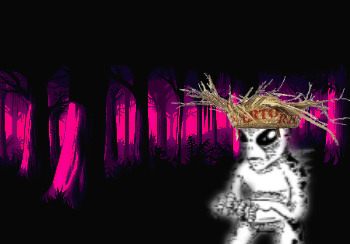
La historia de esta criatura ha sido una que ha recorrido todo el mundo. Desde los Estados Unidos hasta los rincones más lejanos como España, Chile, Filipinas y China. Pero este misterio tiene un origen.
La leyenda surgió en Moca Puerto Rico alrededor de 1975, cuando granjeros reportaron animales muertos misteriosamente en sus granjas. Causa de la muerte siendo desangrados por dos puntos de entrada en el cuello. En ese entonces, no se sabía que animal estaba causando las muertes de los ganados. En específico, cabras. Pero por el método en el que morían, el periódico Vocero reporta la noticia dandole otro nombre.
“El Vampiro de Moca.”
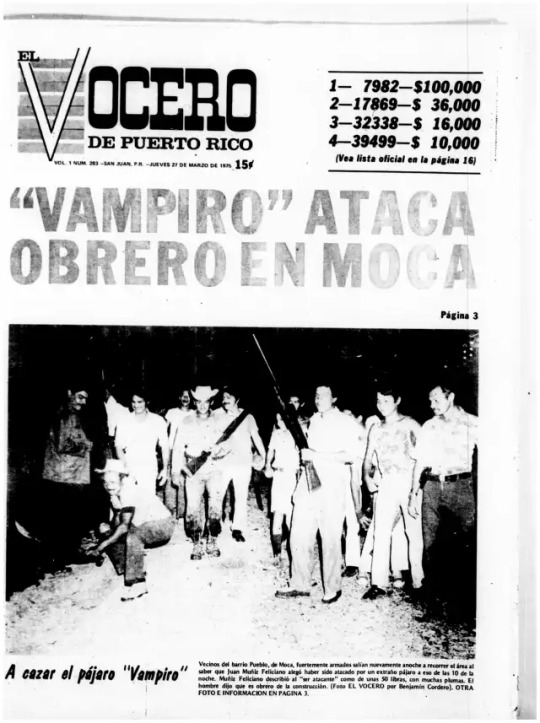
Luego en el 1995, volvieron a ocurrir muertes misteriosas de ganado en los pueblos de Orocovis y Morovis. Las muertes de varios animales por el mismo método llegaron hasta la cifra de 200 animales. El comediante Silverio Perez es referido como el primero en darle nombre a el causante de estas muertes.
El Chupacabras
Desde entonces, la historia del Chupacabras se vuelve internacional. Volviéndose una figura misteriosa la cual reportan casos cada cierto tiempo en distintas partes del mundo.
╰━━━━━∙⋆⋅⋆∙━━━━━╯
Referencias
1, 2, 3
0 notes
Text
LA VIDA DEL CAMPO EN PUERTO RICO: ENTRE TRADICIÓN, RESISTENCIA Y ESPERANZA
La vida rural en Puerto Rico sigue siendo un reflejo profundo de la identidad nacional, una mezcla de tradición, esfuerzo diario y conexión con la tierra. A pesar del avance urbano y los retos económicos, el campo puertorriqueño permanece como un bastión de cultura, autosuficiencia y orgullo. Desde las montañas de Utuado y Adjuntas hasta los valles fértiles de Orocovis y San Sebastián, miles de…
#agricultura en Puerto Rico#agroturismo boricua#campo puertorriqueño#cultura jíbara#jíbaro boricua#Mundo X News#Mundoxnews#noticias del campo#soberanía alimentaria PR#tradiciones del campo#vida rural Puerto Rico
0 notes
Text
Sonia Collazo, trailblazing activist for women and Latinos, has died at 76 - Philadelphia Inquirer
23, 1948, in Orocovis, Puerto Rico. Her father traveled to the mainland while in the military, and she spent time as a child in South Jersey. She …
View On WordPress
0 notes
Text
Lamentablemente muchos en Puerto Rico no entienden esto
Ciudadanos cuestionaron esta madrugada la labor del Departamento de Vivienda para manejar la cantidad de personas que se han interesado en el incentivo de placas solares de hasta $30 mil que se repartirá hoy a través de la isla.
Y es que, como NotiCentro pudo constatar y otros medios escritos reseñar en parte de las 10 oficinas regionales de la agencia, a las personas se le han dado 250 turnos —100 más que los que se informaron que habrían disponibles.
El secretario de Vivienda, William Rodríguez Rodríguez, había indicado que eran 6,000 espacios disponibles, divididos entre 4,000 de forma electrónica, 1,000 en centros de llamadas y 1,000 entre las oficinas —a 100 por cada local.
Hasta el momento, la dependencia pública no ha clarificado si la cantidad otorgada es para considerar quién cualifica y quién no, pues es necesario confirmar la elegibilidad para obtener el vale.
“Lo que no entendemos es porqué tan pocos centros y porqué tan pocos boletos, habiendo personas adultas que no dominan la tecnología…”, señaló Zabdiel Rodríguez en la Oficina de San Juan, ubicada en Las Vistas Shopping Village, donde la fila era muy extensa e incluso llegó a haber uno que otro altercado entre personas y funcionarios de Vivienda.
“Si no íbas a honrar los 250 estás dando 150 por encima. Tendrían que negarle a más del 100 porciento de los 100. No hace sentido que llegaras hasta 250”, agregó el hombre, quien dijo que llegó ayer martes a las 4:00pm.
Incluso, este medio de personas que ya estaban en la fila hasta tan temprano como las 6:00am del martes.
En Caguas, en el centro comercial Plaza del Carmen, El Nuevo Día informó ayer de personas recibiendo hasta1 152 turnos. Maretzie Díaz, subsecretaria de Recuperación de Desastres de Vivienda, le dijo al mismo medio que la cantidad de espacios disponibles en las oficinas no cambiaría aunque hubieran más ciudadanos.
En la primera repartición de vales, en el 2023, los 3,000 turnos que habían se acabaron en menos de una hora.
Última ronda del incentivo
Rodríguez Rodríguez indicó a inicios del mes que hoy, 31 de enero, sería la segunda y última ronda para solicitar el Programa Nueva Energía. Este programa ofrece una subvención para la compra e instalación de sistemas de energía solar, incluyendo placas solares y baterías recargables.
Nueva Energía se sufraga con los fondos CDBG-MIT y cubre el 100% de los costos, hasta un máximo de $30,000 para las personas que cualifiquen. El ingreso familiar del solicitante debe estar por debajo del 80% del Ingreso Medio del Área (AMFI, por sus siglas en inglés), lo que se traduce en un ingreso máximo de $33,600 para hogares compuestos por un solo individuo.
Para esta ronda estarán disponibles 6,000 boletos, lo que significa un incremento significativo en comparación con la primera ronda que contó con 3,000 boletos.
El Departamento de la Vivienda exhorta a los interesados a solicitar una cotización con alguna de las compañías instaladoras autorizadas que participan en el programa. Este paso servirá para garantizar que los participantes reciban una asesoría adecuada y así agilizar el proceso de recibir el beneficio.
“El miércoles 31 de enero a las 8:00 a.m. se comenzarán a entregar los boletos de turno y una vez el solicitante obtenga su boleto, deberá completar su solicitud con los documentos requeridos dentro de los próximos 120 días calendario”, explicó el secretario.
Los interesados podrán solicitar su boleto mediante la página web nuevaenergia.pr.gov, llamando al 1-833-234-2324, o acudiendo a uno de los centros de servicio en San Juan, Mayagüez, Vega Alta, Aguadilla, Hatillo, Caguas, Fajardo, Ponce, Yabucoa y Orocovis.
Las personas interesadas pueden obtener más detalles en nuevaenergia.pr.gov.
#mensaje para los puertorriqueños#puerto rico#politicos corruptos#despierta puerto rico#corrupción en puerto rico#esto es puerto rico#puertorriqueños#politicos de mierda#corrupt politicians#corrupción#despierta boricua#boricuas en florida#la corrupción en puerto rico#partido pnp de puerto rico#el partido mas corrupto en puerto rico#gobierno de puerto rico#el gobierno de puerto rico
0 notes
Text

Doña Juana, Orocovis
11/enero/2024
9 notes
·
View notes
Text
Prichard Colon
Prichard Colon: A Fighter’s Story of Battle for Recovery and Justice
Prichard Colon made headlines in the professional boxing community and not just because of his incredible success in the ring. His story serves as a tribute to the resilience of the human spirit and the never-ending pursuit of justice, healing and hope.
Early Beginnings: Prichard Colon
Prichard Colon was born in Maitland, Florida on 19 September, 1992. When he was just 10 years old, his father Richard colon made a crucial decision of moving to Puerto Rico. Their intention was simple to allow Prichard a chance to compete in boxing and represent the territory. In order to go to the small Puerto Rican village of Orocovis, they had to leave behind their life in Florida, where they were living with Prichard’s mother and elder brother.
The Amateur Star
Prichard’s boxing career began at El Albergue (Athletic training center) in Salinas, Puerto Rico. At this training area, he was given the nickname “Digget,” which was due to his extraordinary height and a sign of big things to come. Prichard combined his studies in Business Administration at the Universidad del Sagrado Corazón in San Juan which displayed his commitment to both his education and his boxing career.
Prichard made headlines as an amateur boxer by taking home five national titles in the 141 and 152 pound weight classes. His outstanding achievement was celebrated as he took home the gold medal in the 64 kg division at the 2010 Pan American Youth Championship.
For More Information visit us our Website : celebritydecks
0 notes
Text
Pareja cae por precipio mientras corría "banshee" en Orocovis; muere joven de 19 años
(Facebook/Ángel Coira Rivera) Un joven de 19 años de edad falleció ayer tras caer por un precipio de más de 40 pies mientras corría un vehículo todoterreno tipo “banshee” por la carretera PR-157, en Orocovis. La víctima fue identificadacomo Ángel Coira Rivera. La otra persona que iba como acompañante era Robielys Berríos, de 22 años, quien resultó herida pero peramence en condición…

View On WordPress
0 notes
Text
i have never heard the english pronunciation of morovis, orocovis and canovanas im dying
0 notes